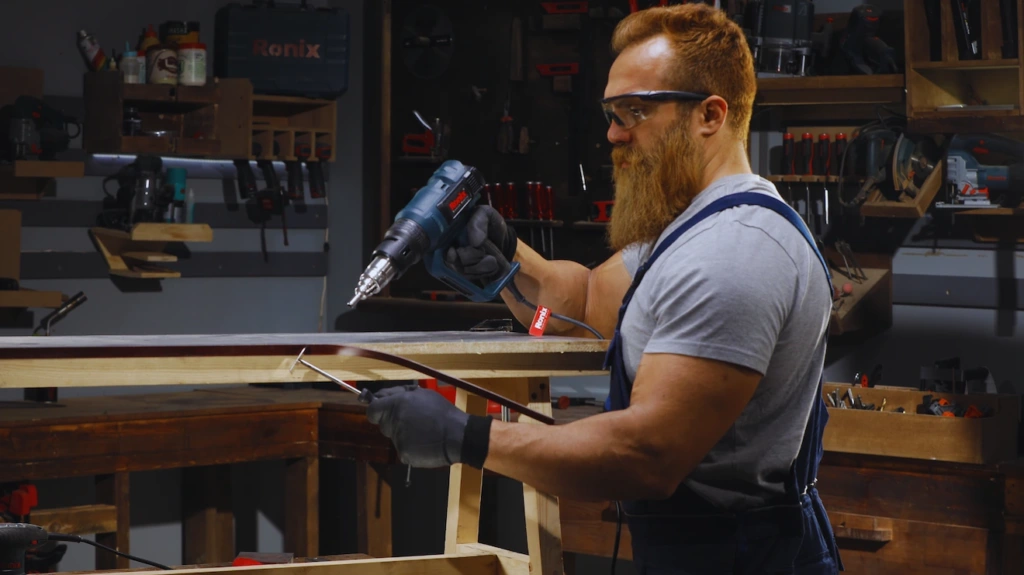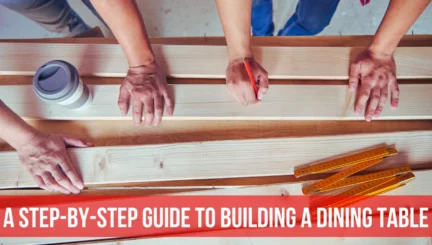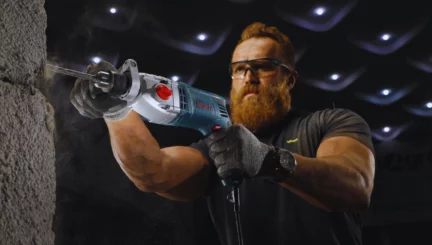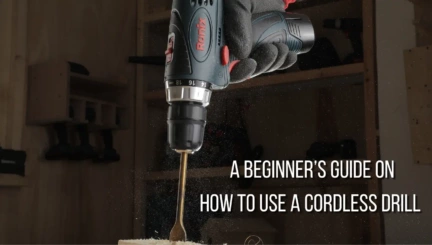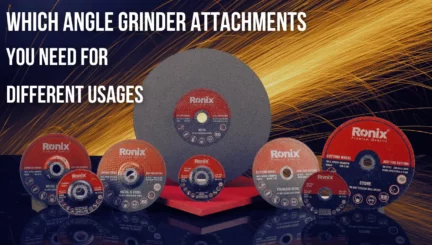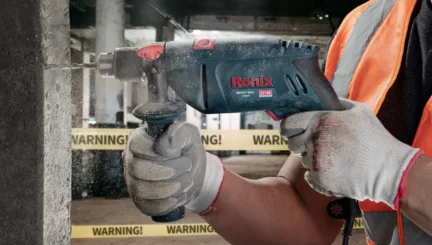- 7min
- 10391
- 0
You might think you’ve never used a heat gun but you have. Everyone has! Because everyone has used a blow dryer. The difference between blow dryers and professional heat guns is the fact that heat guns can reach much higher temperatures.
Professional heat guns can reach temperatures as high as 600 degrees Celsius. This quality makes them useful in a wide number of applications. In the following paragraphs, we will talk about heat gun uses.
These tools are used in a wide number of settings which include industrial and domestic applications. These tools are used for electronics jobs as well as carpentry, construction, automotive work, packaging, and plumbing among others. Scroll down to read more about heat gun uses.
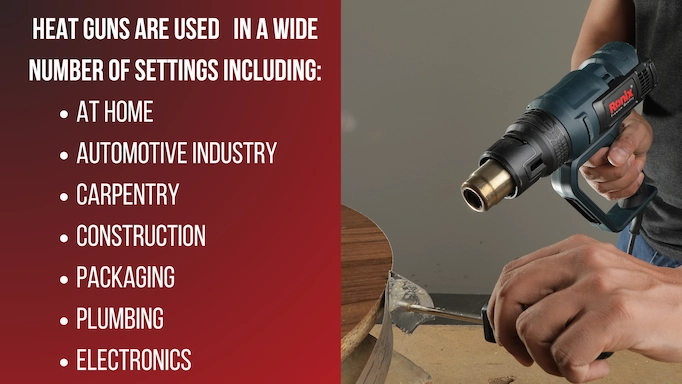
Heat Gun Uses
The specific applications that these tools are used for include paint-stripping, shrink-wrapping, adhesive removal, thawing frozen pipes, soldering electronics, bending and forming plastic and PVC, drying surfaces, removing wrinkles, and embossing.
Before we get to the uses of heat guns we need to talk about how potentially dangerous these tools could be. To prevent any accident or injuries, always pay attention to safety guidelines for heat guns some of which are:
- Read the manual of the heat gun.
- Wear appropriate clothes and protective gear.
- Make sure of proper ventilation in the area.
- Keep flammable materials away.
- Do not point the heat gun at yourself or others.
- Use the appropriate temperature for the job.
Paint-Stripping
One of the main heat gun uses is in stripping paint. Heat guns are a quick and efficient method for accomplishing this task.
Using these tools is one of the most preferred ways to accomplish this task because in contrast to using chemical methods, paint-stripping with these tools does not emit harmful chemicals. Heat guns are also extremely versatile for paint-stripping. These tools can be used on various surfaces to remove paint from them including wood, metal, and masonry.
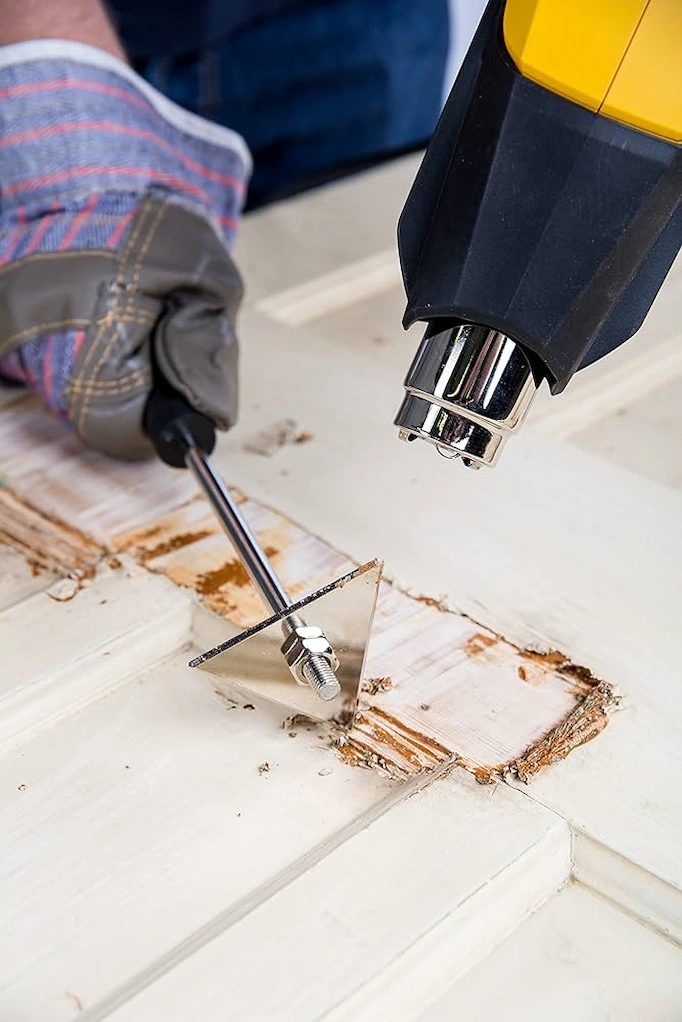
Shrinking Wrap
This is one of the most common uses for heat guns in industrial and domestic settings. These tools can be used to shrink tubing for packaging or insulation.
Once you apply heat to the plastic film via the heat gun, the plastic shrinks, changes form, and wraps around tightly around the object that needs to be wrapped.
Fresh produce, meat and poultry, and vegetables, along with a large portion of the food products you get from the supermarket or restaurants come in shrink wrapping. Workers in the food or retail industry use heat guns for shrink wrapping.
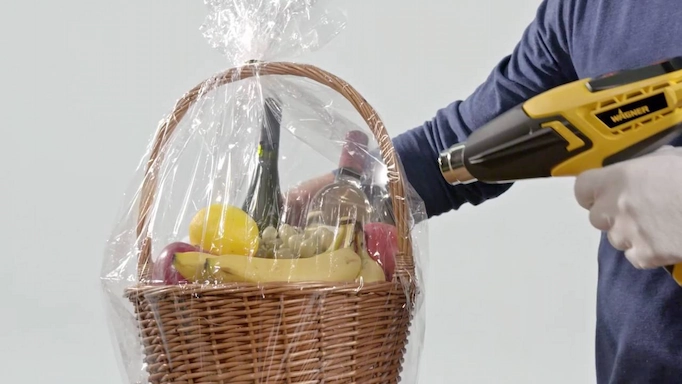
Shrink-wrapping is not limited to small objects. Cars and even large industrial equipment and machines are sometimes also shrink-wrapped. Using a heat gun is always a popular method for doing this task, even if comes to cars and vehicles. Industrial methods are also popular but, in most cases, the same technique is used.
Removing Adhesives
The heat from a heat gun can soften adhesives. This will make it easier to remove stickers, decals, and glue residue from different surfaces. Adhesive removal is among the heat gun uses in electronics jobs and industries.
By applying heat to adhesives, they get softer and more pliable. Once this happens, you can easily remove the adhesive without damaging the underlying surface. Using this quality, you can easily remove unwanted bumper stickers, labels, and wallpapers!
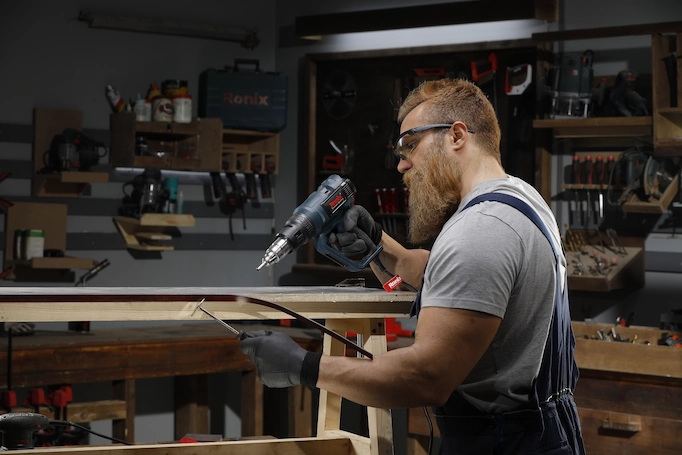
Thawing Frozen Pipes
One of the most common and annoying problems in the winter for homeowners is frozen pipes, fittings, and valves, especially the ones that are kept outside.
This is where the heat gun comes in. You can thaw your frozen pipes, fittings, and valves using these tools. This is one of the most common heat gun uses for home-owners. One thing that needs to be paid attention to is not to put excess heat on the pipe as it could cause the water in the pipe to turn into steam.
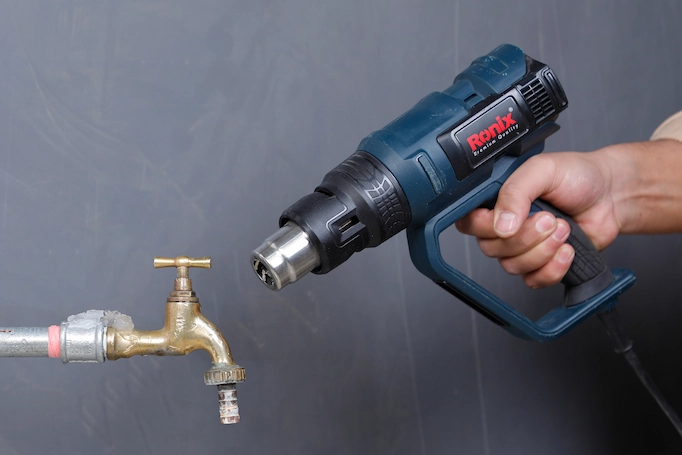
Soldering Electronics
These tools are essential for electronics repair work. One of the main uses of heat guns in this field is desoldering and resoldering electronic components, especially ones that are surface-mounted on circuit boards.
If you intend to do any kind of soldering using heat guns, you need to select the right type.The models that come with precise heat adjustment are ideal for this application. Overheating can cause damage to electronic components.
Bending, Forming, and Welding Plastic and PVC
The heat from heat guns can easily bend plastics and PVC pipes. This feature then can be used to form plastics and PVC. This is a useful feature in professions like plumbing.
It’s important to use a heat gun with precise heat adjustment. After you apply heat to the material, it becomes pliable and then you can form the material to your desired shape. The process is different for different materials. Once you stop applying the heat, the material will become colder, get hardened, and take its final shape.
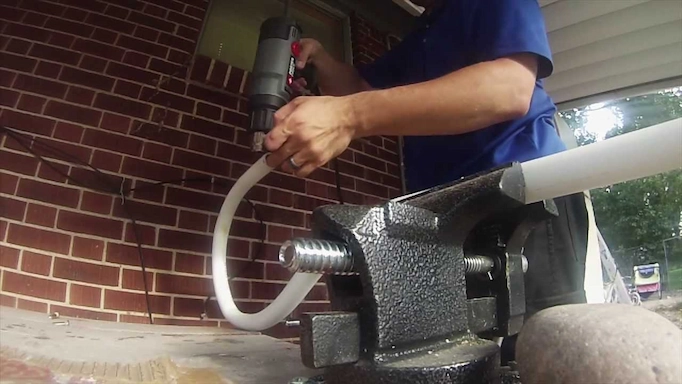
This process is also sometimes called plastic welding which is exceptionally useful for plumbers in cases in which they need to connect PVC or plastic pipe fittings.
Plastics can also be melted using these tools. After the plastic is melted it can be put in a mold to form a new shape.
Drying
This one should go without saying. One of the common uses of heat guns is drying paint, adhesive, or wet surfaces. Pretty much everyone has used these tools for this purpose without knowing that they have done so! Blow dryers are one of the most commonly used types of this tool.
The process of drying paint is usually accelerated in automotive industries using these tools. Additionally, in construction, woodworking, upholstery, and other professions, it’s common to use heat guns to facilitate the drying of adhesives, sealants, and finishes.
Heat guns are invaluable tools for drying wet surfaces, especially floors and walls. This can prevent growing of mold and any damage that could ensue.
Removing Wrinkles
One of the uses of heat guns is removing wrinkles from a variety of materials, including fabric, upholstery, and even some types of plastics. When these tools are applied correctly, the heat generated by these tools can help to relax the fibers of the material, stretch them, and allow them to regain their original shape and smoothness.
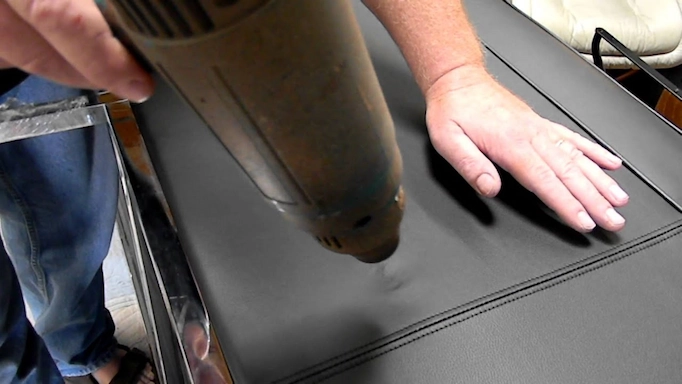
This is an exceptionally effective method for removing wrinkles when it comes to stubborn wrinkles from thick or heavy fabrics, such as curtains or upholstery. In this case, traditional ironing may not be as effective. Additionally, heat guns can be used to target specific spots or areas that could be hard to reach.
You should always pay attention to safety when it comes to heat guns. These tools should be used at a safe distance and at the right temperature to avoid damage or scorching.
Embossing
One of the heat gun uses which is popular for creative and arts and crafts purposes is embossing different materials, especially paper. Embossing a piece of paper with a heat gun elevates parts of the material and in this way, you can create patterns in the paper.
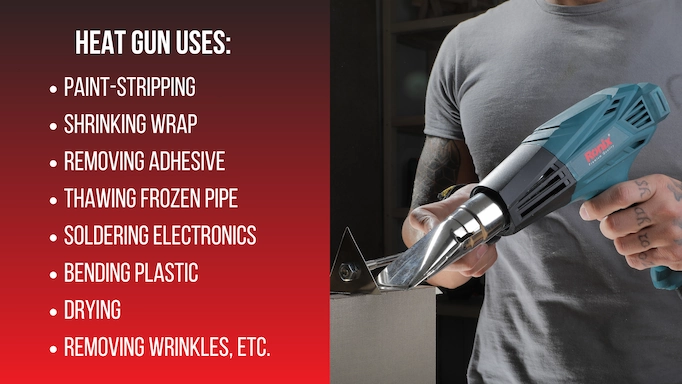
If you require a heat gun, you can find more information on our blog about how to find the proper one for your own purposes. You can also take a look at the wide catalog of Ronix heat guns.
FAQ
What is a heat gun used for?
Heat guns are used for a large number of tasks in industrial or home settings. Some of these tasks include paint-stripping, shrinking wrap, adhesive removal, forming plastic, and drying.
What surfaces can I use a heat gun on?
Depending on the temperature, these tools can be used on wood, rubber, metal, plastic, glass, fabric, concrete, tile, and leather.

Ronix
18 March 2024
